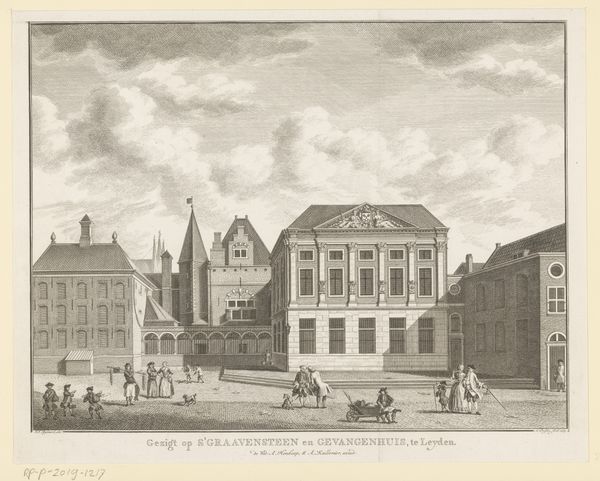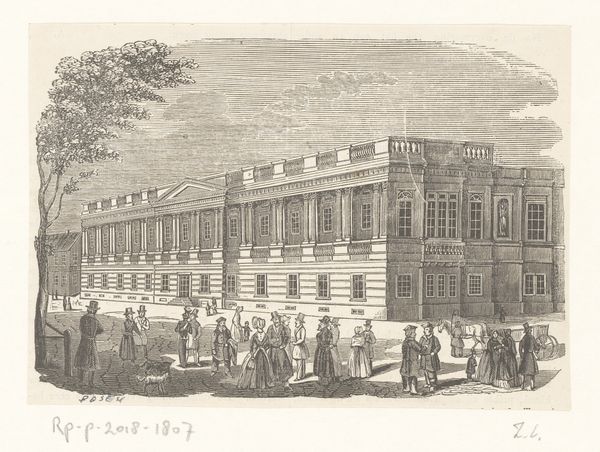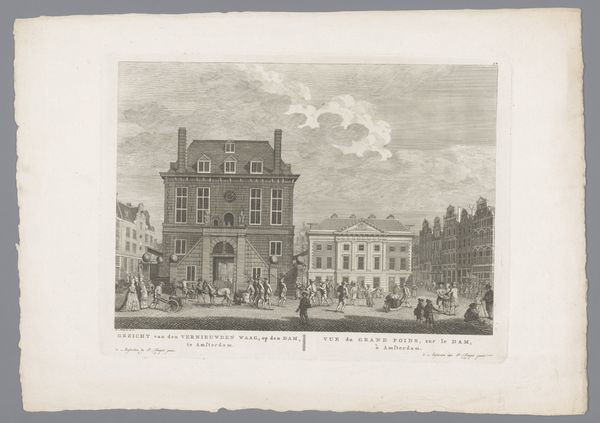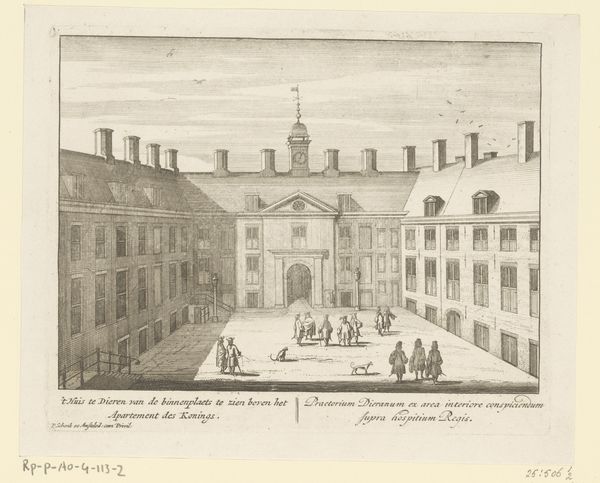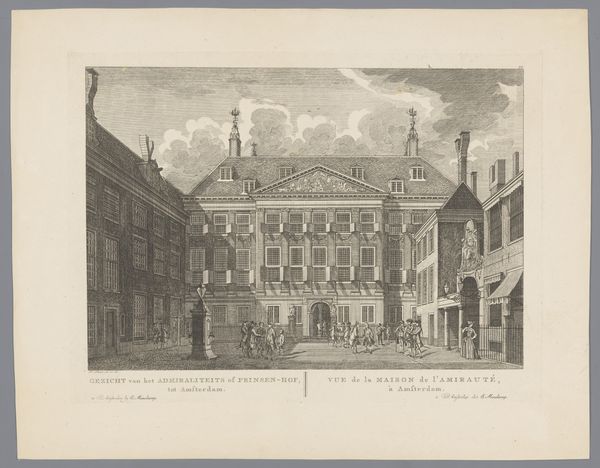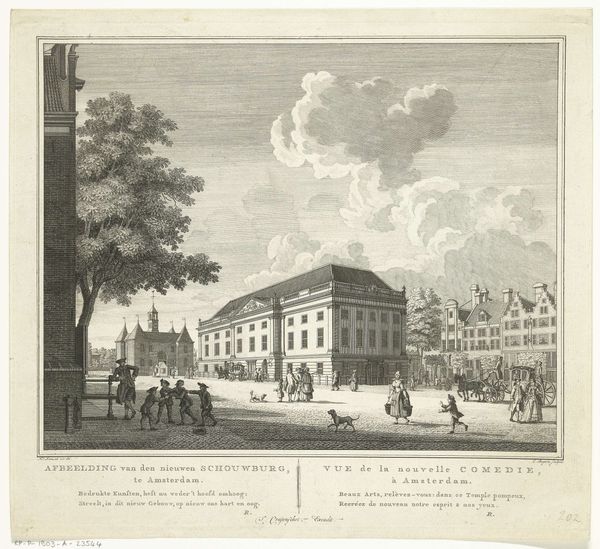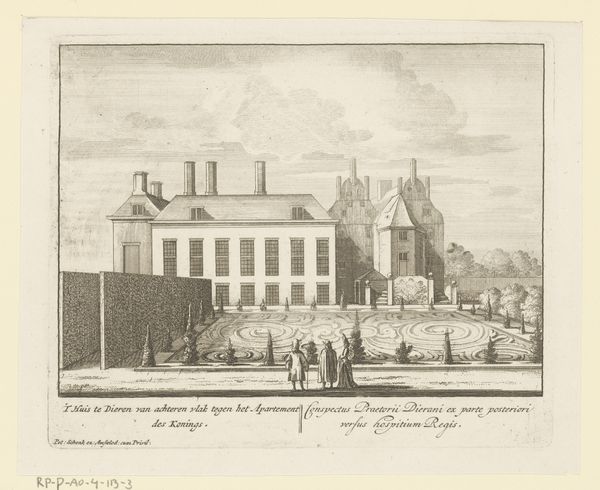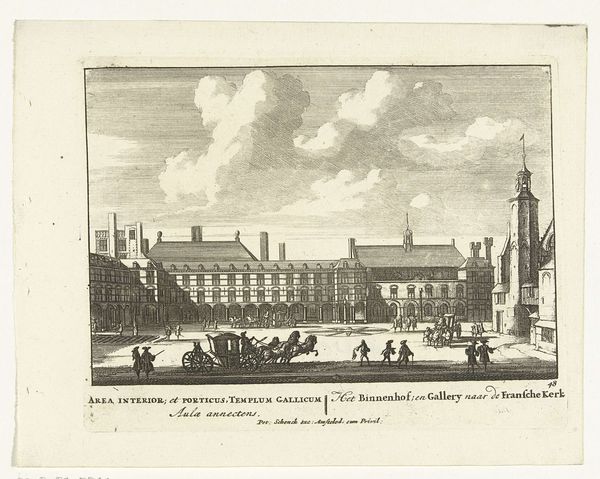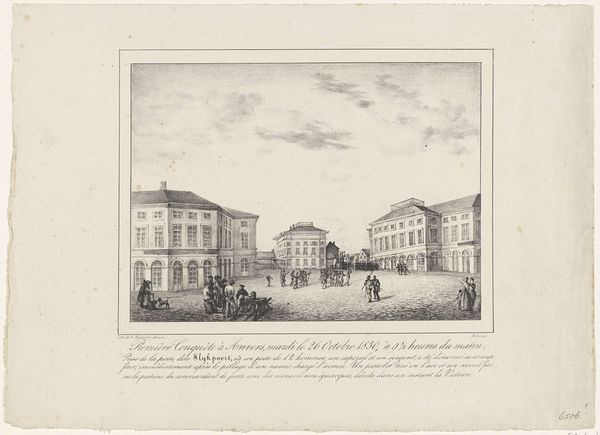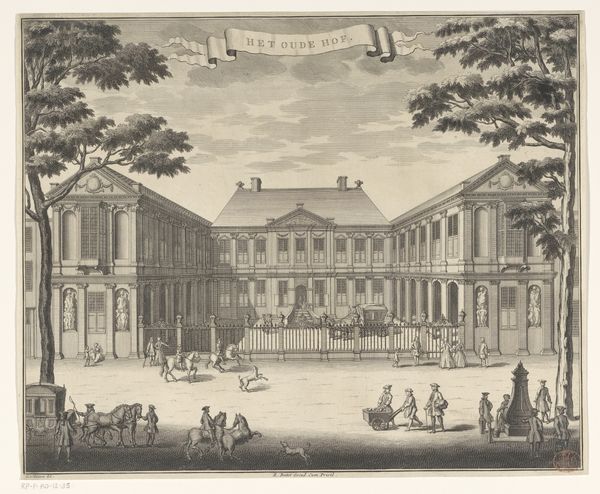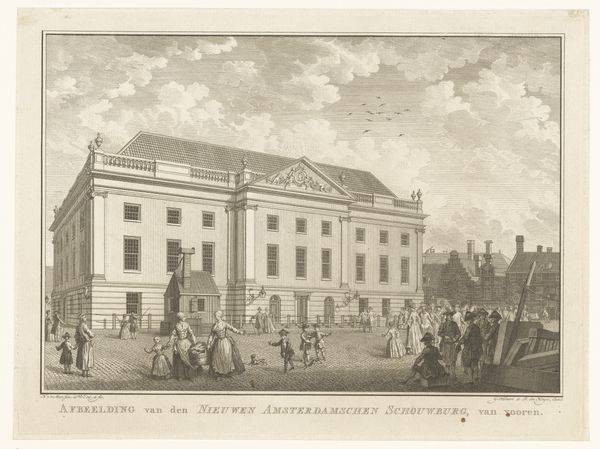
Gezicht op het meisjeshuis van het Burgerweeshuis te Amsterdam c. 1770 - 1783
0:00
0:00
cornelisbogerts
Rijksmuseum
Dimensions: height 265 mm, width 358 mm
Copyright: Rijks Museum: Open Domain
Editor: This is "Gezicht op het meisjeshuis van het Burgerweeshuis te Amsterdam," an engraving by Cornelis Bogerts, likely made between 1770 and 1783. It depicts the courtyard of a girl's orphanage. The overall effect, for me, is of restrained elegance. What do you see in it? Curator: Its elegance indeed derives from the careful application of Baroque principles of order and symmetry, a visual framework imposed upon the depicted architectural and social space. Notice the calculated deployment of linear perspective; all lines converge toward a vanishing point, thus creating depth, but also reinforcing the building's imposing presence. What do you think this perspective achieves? Editor: It almost feels staged. Everyone seems positioned perfectly within the lines of the architecture. Curator: Precisely! The figures become elements in a carefully constructed composition, mirroring the architectural rigidity. The sharp contrast between light and shadow further accentuates the geometry, dividing the courtyard into distinct planes. Do these planes suggest a hierarchy to you? Editor: It's like the architecture dominates, and the people, though present, seem subordinate. Almost as if they are an after-thought or another geometrical element within the courtyard? Curator: A cogent observation. The lines direct the viewer to the building first, it’s facades, and its scale and symmetry. This ordering reminds the viewer of the controlling societal structure itself, an ideal realised through order and rigorous control. It invites one to question how the inhabitants navigate within a structured system, both aided and, perhaps, limited by it. Editor: So, it's less about the individual girls and more about the system that houses them? Curator: Exactly. The architectural and pictorial space highlights how this order shapes the lives within. We see structure determining content, with all its semiotic ramifications, and ultimately allowing a certain reading through formalism. Editor: That’s fascinating. I never thought about perspective and shadow as tools for emphasizing power structures. Thank you.
Comments
No comments
Be the first to comment and join the conversation on the ultimate creative platform.
